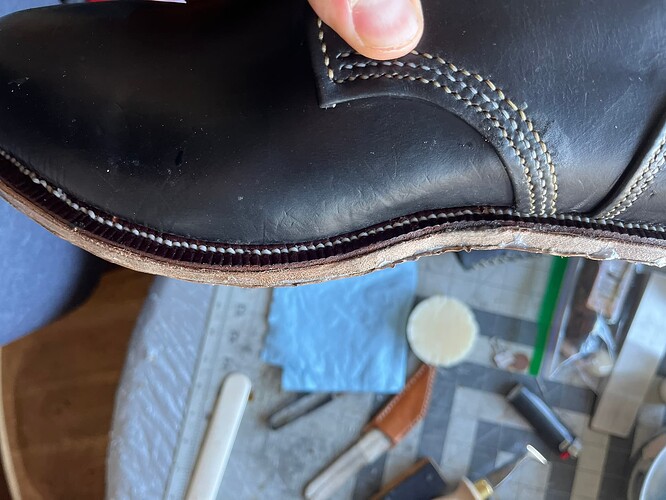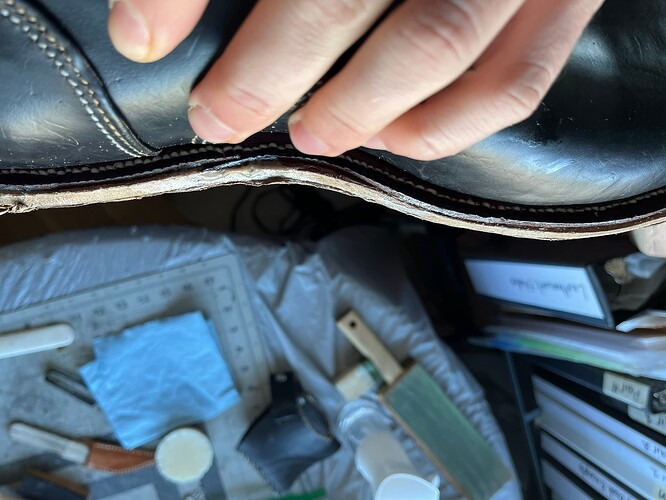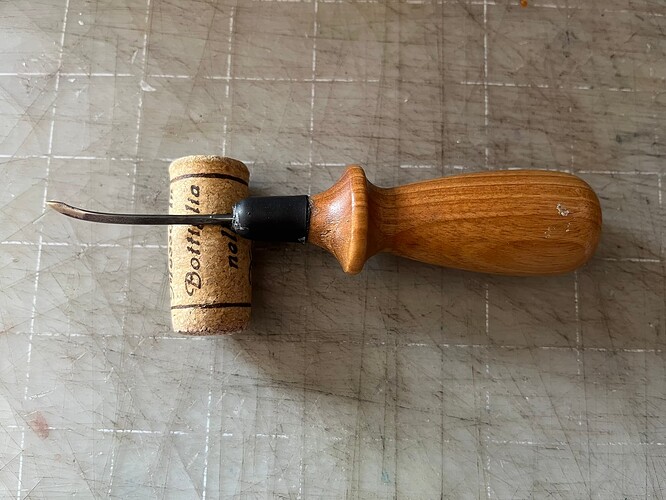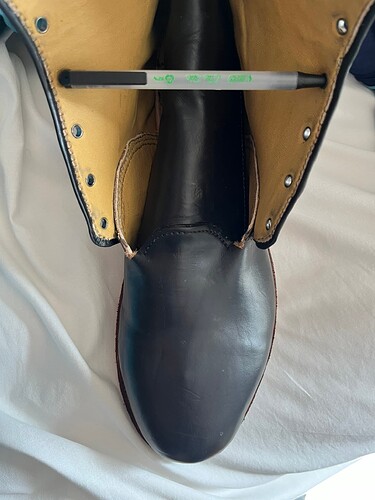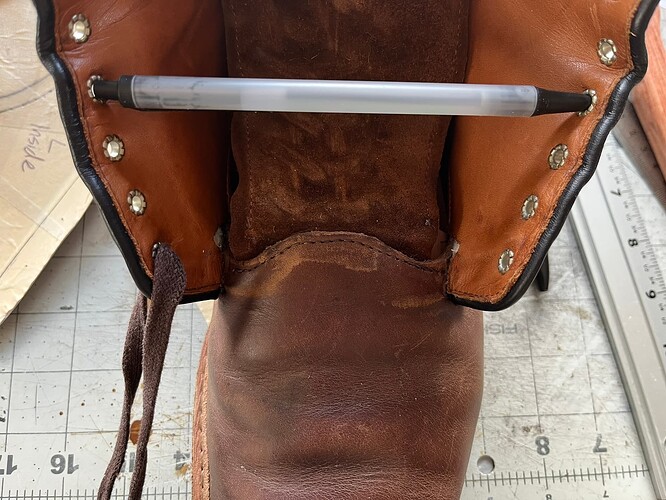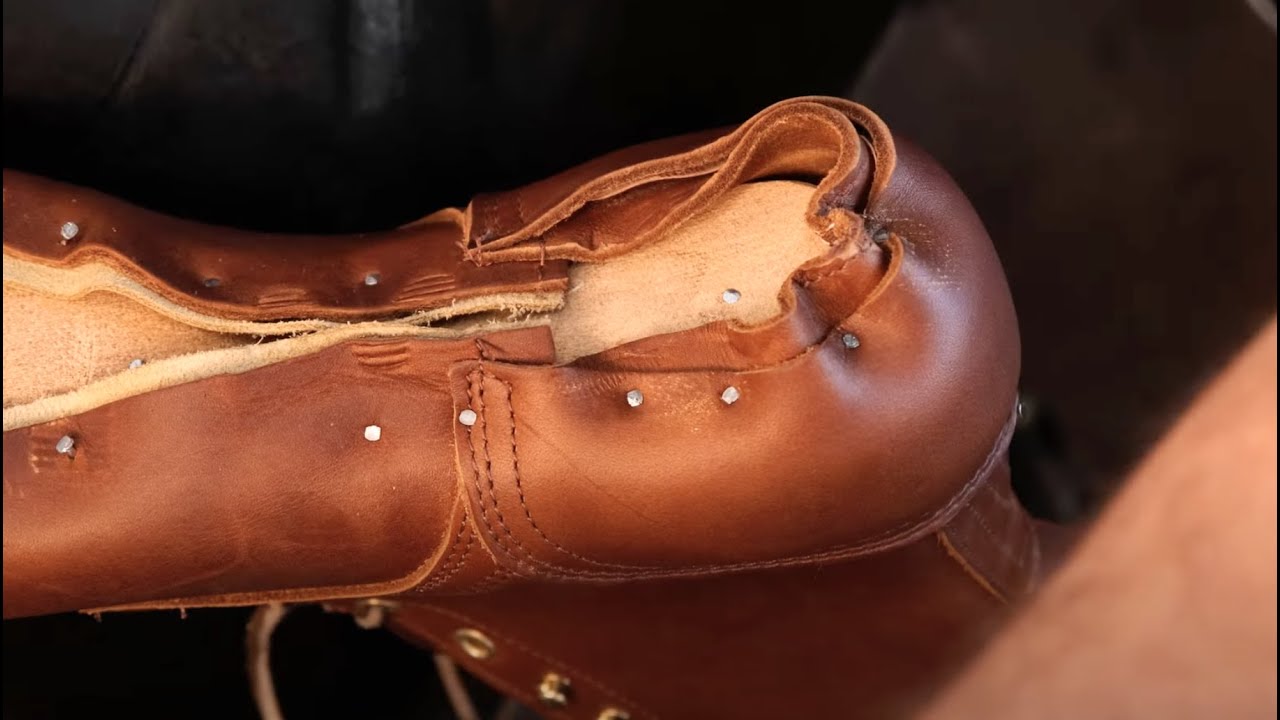I’m starting to get close to outseam lines that I actually like.
Really Good Idea: Marking every hole with the awl first.
As expected, this markedly improves the appearance of stitching.
I marked one pair here just with a scratch awl. But I got even better results using the square awl itself. That gave me a better chance to check how practical the piercing angle would be. It also seemed to make it even easier to place the awl back just exactly where I’d pricked the mark beforehand.
Good Idea: Fat pommel on awl haft.
This was my first try with a pistol-style, asymmetric awl haft with a wide butt end. I still got some irritation in the palm of my hand…after doing a whole 360 welt all the way around a US size 13-ish boot in a day. But it didn’t blister, and I definitely had an easier time pushing through.
I do suspect that the first, cheap sole bend that I’m just now coming to the end of may be somewhat to blame. It’s definitely been rolled very hard. I’m not paying for JR soles anytime soon. I’m still kind of shocked how pricey those are, even from my local shoe supply. But I’m going to try some cut stock outsole blanks next time I’m by, probably from Keystone. I’d frankly trade some durability to keep hand outseaming fun.
Bad Idea: Feeding bristles back through to fix wrongly twisted stitches.
I’m pretty good about guiding the twist of each stitch that I make, but occasionally I’ll pull one tight, look back, and see the threads just didn’t cross the way I wanted. I fixed a small handful of these by passing the bristle through to unstitch and using thread already through to help pull back. But in the end that turned out to be a mistake.
It’s been way easier, cleaner, and faster to just remove the bristles—in my case, bent wire—pull the thread out, and get the bristle mounted up again. Maybe that’s just because I’m using poly thread and even the tapered plies of the taw hold up so well. Maybe it would work for hemp or linen, too.
I suppose I shied away from this because I’m touchy about how well my bristles hold on.
Good or Bad Idea?: Fusing the Taws with Glue
I keep wondering whether there isn’t some adhesive I could use to just glue together and harden the taws of my PET tapers into usable bristles themselves. Why go through the rigamarole of wrapping and binding a bristle that’s thicker than the fine point of the taw—like nylon monofilament—when you can just fuse the thread itself? Unfortunately, it seems cyanoacrylate is not great at bonding PET, and adhesives recommended for PET seem to be specialty industrial products. But I’m wondering whether I couldn’t just mix up a little puddle of two-part epoxy and drag it through. Perhaps I’ll give it a try today.

